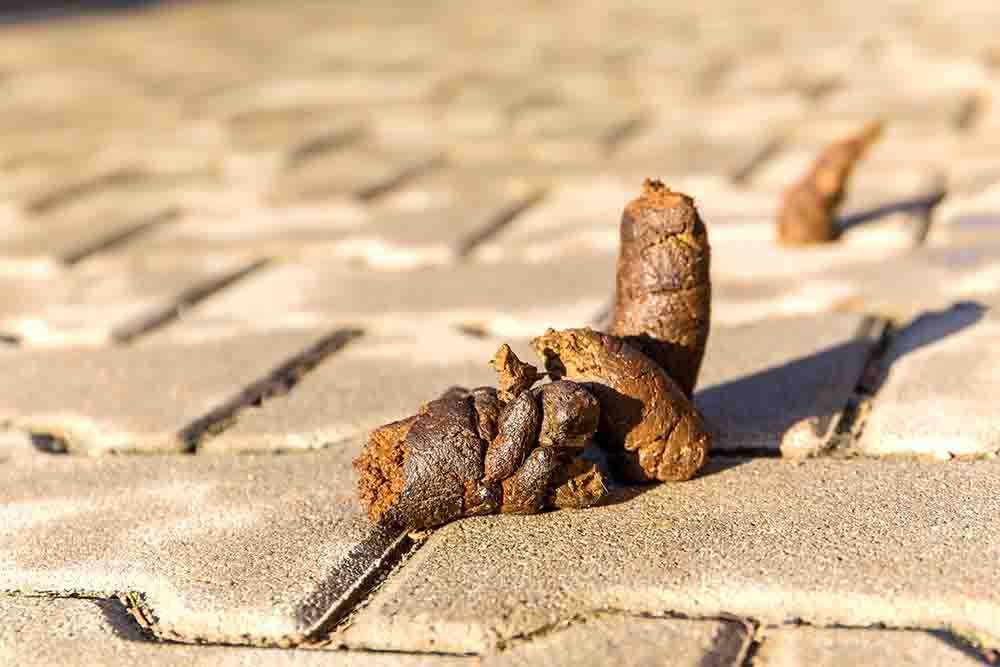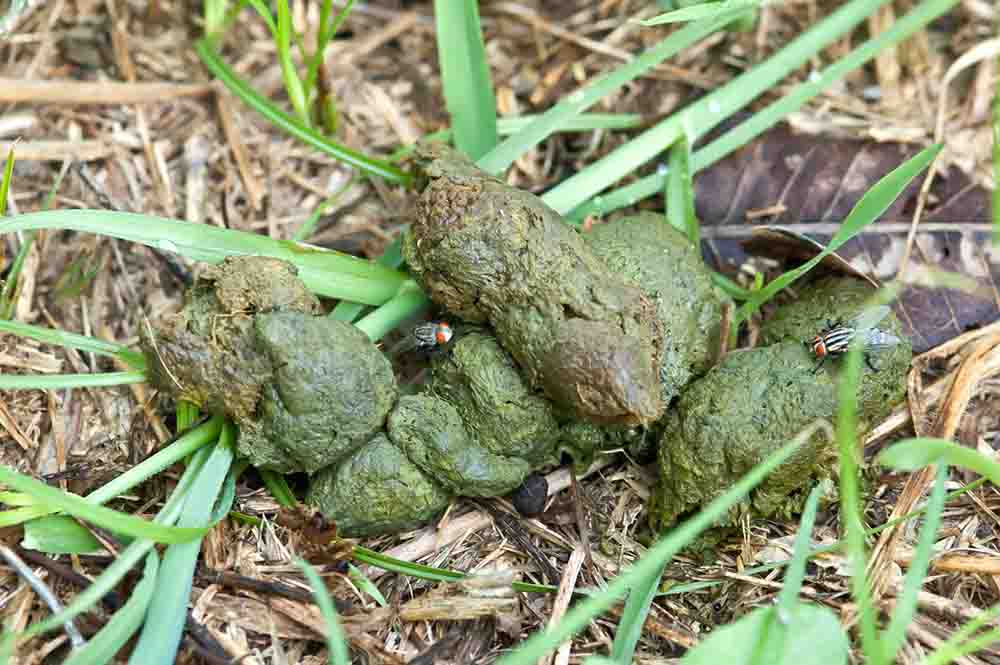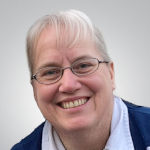
This article was updated on June 22nd, 2024

Giardia is a microscopic parasite of the intestines that can infect dogs, people, other mammals, and birds. About 15% of dogs in the United States have Giardia in their gastrointestinal system, so it’s a fairly common disease.
In this article, we will discuss what Giardia dog’s poop looks with 5 pictures showing various situations.
Dogs with Giardia often have watery diarrhea or greasy, fatty stools
When dogs have a Giardia infection, known as giardiasis, they may develop diarrhea because the parasite interferes with the gut’s ability to absorb water and nutrients. Thus, the stool contains extra liquid.
However, not all dogs will exhibit symptoms: in some dogs, Giardiasis infection is asymptomatic. When your dog does show symptoms, you may notice:
- Copious watery diarrhea or greasy, fatty stools
- Passing several stools a day
- Foul smelling gas
- Loss of appetite, loss of energy, vomiting, dehydration or weight loss
What Giardia poop look like: 5 options with pictures
Dogs with Giardia can have poop that ranges in appearance. When a dog with Giardia shows no visible symptoms, the stool may look completely normal. Otherwise, the stool may look like one of the 5 options below:
Option 1: normal brown appearance
Brown, firm poop that looks normal usually means your dog is healthy. However, sometimes a dog can have normal-looking poop and still be infected. If you suspect Giardiasis in your dog, have their feces tested.

Option 2: soft (like melted ice cream) appearance
When your dog’s poop looks like a pile of melted ice cream, it can mean your pup is stressed but otherwise healthy. It can also point to an irritated intestine. A soft stool occurs when the colon isn’t absorbing enough water from undigested food.

Option 3: watery stool
Giardia infects dogs’ intestines and disrupts nutrient absorption. This can lead to watery stools, as shown on the picture below.

Watery diarrhea can be the result of intestinal parasites like giardia or roundworms. It can also be caused by bacterial infections like Salmonella, viral infections like Parvo, and even other medical conditions like pancreatitis.
When your dog has a watery stool, the condition can quickly become life-threatening due to fluid loss. Contact your veterinarian immediately.
Option 4: greasy stool
When your dog’s stool looks greasy, it can mean there’s a problem with the pancreas or with fat digestion. It’s also commonly seen in dogs infected with Giardia.

Option 5: green color
When a dog is infected with Giardia, the parasite can disrupt the normal absorption of nutrients, leading to maldigestion. This maldigestion can result in a change in stool color, sometimes appearing green. A green stool can be caused by different things:
- A Giardia infection
- Eating too much grass
- An allergic reaction
- Poisoning. If your dog has a green stool and you suspect rat poison, call your emergency veterinarian immediately.

Color & appearance of giardia poop (overview infographic)
We have summarized the key points in the infographics below:

Click on the links in the summary below to view pictures:
| Color/Appearance | What it likely means | What you should do |
| Normal | Healthy dog or subclinical Giardia | Bring a fecal sample to the vet for testing |
| Soft, like melted ice cream | Stress reaction, irritated intestine, or Giardia | Contact vet for an exam, bring a fecal sample |
| Watery, brown or yellow | Intestinal parasite, bacterial or viral infection, Giardiasis, toxic reaction, pancreatitis | Contact vet immediately |
| Greasy | Intestinal inflammation, pancreatitis, poor fat digestion, Giardiasis | Contact the vet if the greasy stool persists for more than a few days, if you see blood, or if your dog is also vomiting |
| Green | Giardiasis, allergic reaction, eating grass, or rat poisoning | If you see persistent green stool, or if your dog is also vomiting, contact your vet immediately |
Are there effective at-home test kits?
When you think your dog has a Giardia infection, but his illness is not an emergency situation, you can test for the parasite at home. Always contact your veterinarian before using an at-home option.
There are a few effective test kits available such as the My Simple Pet Lab Routine Dog Stool test kit and the Dog Parasite Worm Mail-in Stool Test Kit. Each of these kits comes with instructions for safely collecting a stool sample and mailing it to a laboratory for analysis.
Because dogs shed Giardia cysts intermittently, you may need to run several consecutive tests to confirm a diagnosis.
How can I know for sure if my dog has Giardia?
The only way to confirm Giardia is a fecal test. The appearance alone of your dog’s poop will not give you enough information and confidence that your dog still has giardia. If your pooch has unresolved diarrhea, take them to the vet.
At the exam, your dog’s doctor will get a history of their behavior and symptoms. Depending on the poop and history, they may run other diagnostic tests, including:
- Parvovirus test
- Blood test for toxins
- Fecal exam for parasites
Sometimes, your veterinarian will see Giardia cysts in a routine fecal flotation, but they’re not always present. Repeated tests may be needed for a diagnosis.
If other conditions are ruled out, the clinic may also run a specialized analysis of the poop to detect Giardia-specific proteins from the parasite’s cell wall.
What Makes The Most Sense: Home Remedies or Veterinary Treatment?
As with a lot of doggie illnesses, there are many at-home remedies offered out there within easy reach. However, you don’t want to try any of these remedies without veterinary supervision.
Natural options, such as Oregon Grape and garlic can be detrimental at the wrong dose or frequency.
Instead of trying natural remedies on a whim, speak with your veterinarian first about natural or other options that you can try to treat Giardia. They may be able to recommend a product specifically with your dog’s size and other health conditions in mind that will increase the safety and efficacy of use.
How do dogs get Giardia (Giardiasis)?

Infected people and animals pass Giardia cysts in their feces, and dogs become infected by ingesting the cysts. Your dog can pick up giardiasis by:
- Coming in direct contact with infected poop
- Walking through, rolling, or playing in a contaminated area, then licking their fur or paws
- Sniffing an infected dog’s hind end and then licking their nose
- Drinking water that was contaminated by infected poop
- Killing contaminated rodents or other prey
- Traveling in a contaminated animal crate
Disclaimer: This website's content is not a substitute for veterinary care. Always consult with your veterinarian for healthcare decisions. Read More.


How long does it take for the parasite to show up in a pups stool after she come in contact with contaminate?